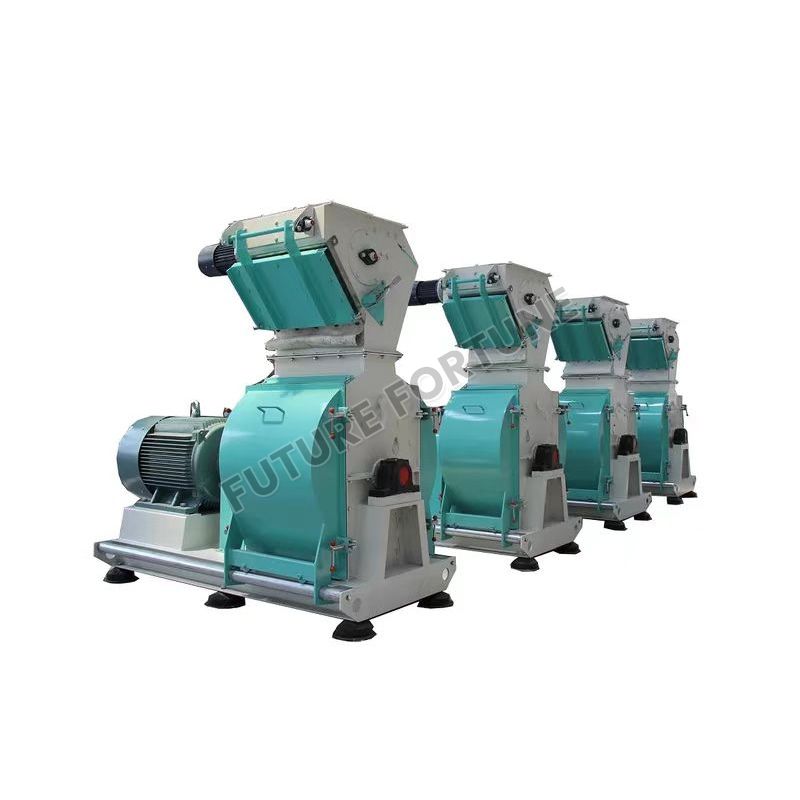Hammer Mill: A Versatile and Efficient Grinding Machine
In the realm of industrial machinery, the hammer mill stands as a versatile and indispensable tool for various grinding applications. With its ability to finely pulverize a wide range of materials, the hammer mill has become an essential piece of equipment in industries such as agriculture, food processing, pharmaceuticals, and more. In this article, we explore the functionalities, benefits, and applications of the hammer mill, shedding light on why it is considered a cornerstone in modern grinding operations.
The Mechanics of a Hammer Mill
At its core, a hammer mill is a grinding machine that utilizes a series of hammers rotating at high speeds to crush and pulverize materials. The materials are fed into the mill through a feed chute and are struck by the rotating hammers, which break them down into smaller particles. These particles then pass through a screen, determining the desired size of the final product. The versatility of the hammer mill lies in its ability to handle a wide range of materials, from grains and herbs to fibrous and tough substances.

Advantages of a Hammer Mill
1. Versatility
One of the primary advantages of using a hammer mill is its versatility in processing various materials. Whether it's grinding grains for animal feed, reducing wood chips for biomass energy production, or pulverizing pharmaceutical ingredients, the hammer mill can effectively handle diverse substances, making it a go-to choice for numerous industries.
2. Efficient Size Reduction
The hammer mill excels in its ability to deliver efficient size reduction. The combination of high-speed rotation and the impact of the hammers on the materials ensures rapid and thorough pulverization. This results in a consistent particle size distribution, enhancing the performance and quality of the final product.
3. Customizable Particle Sizes
With the use of interchangeable screens, the particle size output of a hammer mill can be easily adjusted according to specific requirements. This flexibility allows manufacturers to produce a range of particle sizes, catering to different applications and market demands.
4. Low Maintenance
Hammer mills are known for their robust construction and low maintenance requirements. They are designed to withstand heavy-duty usage and are equipped with easily replaceable wearing parts. This durability translates into reduced downtime and increased productivity for businesses.
5. Cost-Effective Grinding Solution
Compared to other grinding machines, the hammer mill offers a cost-effective solution for size reduction processes. Its simple design and efficient operation contribute to lower capital and operating costs, making it an economical choice for businesses of all sizes.
Applications of Hammer Mills
The wide range of applications for hammer mills reflects their versatility and effectiveness. Some common applications include:
1. Agriculture and Animal Feed Processing
Hammer mills are widely used in the agricultural sector for grinding grains, corn, and other feed ingredients. They play a vital role in animal nutrition, as the finely ground feed allows for better digestion and nutrient absorption.
2. Food Processing
In food processing industries, hammer mills are employed to grind spices, herbs, grains, and other ingredients. The consistent particle size achieved through hammer milling ensures uniform mixing, improved flavor extraction, and enhanced product quality.
3. Pharmaceuticals
The pharmaceutical industry utilizes hammer mills for size reduction of various pharmaceutical ingredients. This allows for the production of uniform powders, facilitating efficient mixing, blending, and tablet formulation.
4. Biomass and Biofuel Production
Hammer mills are crucial in the production of biomass and biofuels. Wood chips, straw, and other fibrous materials are efficiently processed into smaller particles, increasing their surface area and facilitating better combustion or fermentation.
5. Recycling and Waste Management
Hammer mills are employed in recycling operations to grind and reduce the size of materials such as cardboard, paper, plastics, and more. This aids in the recycling process, preparing materials for further processing or repurposing.




